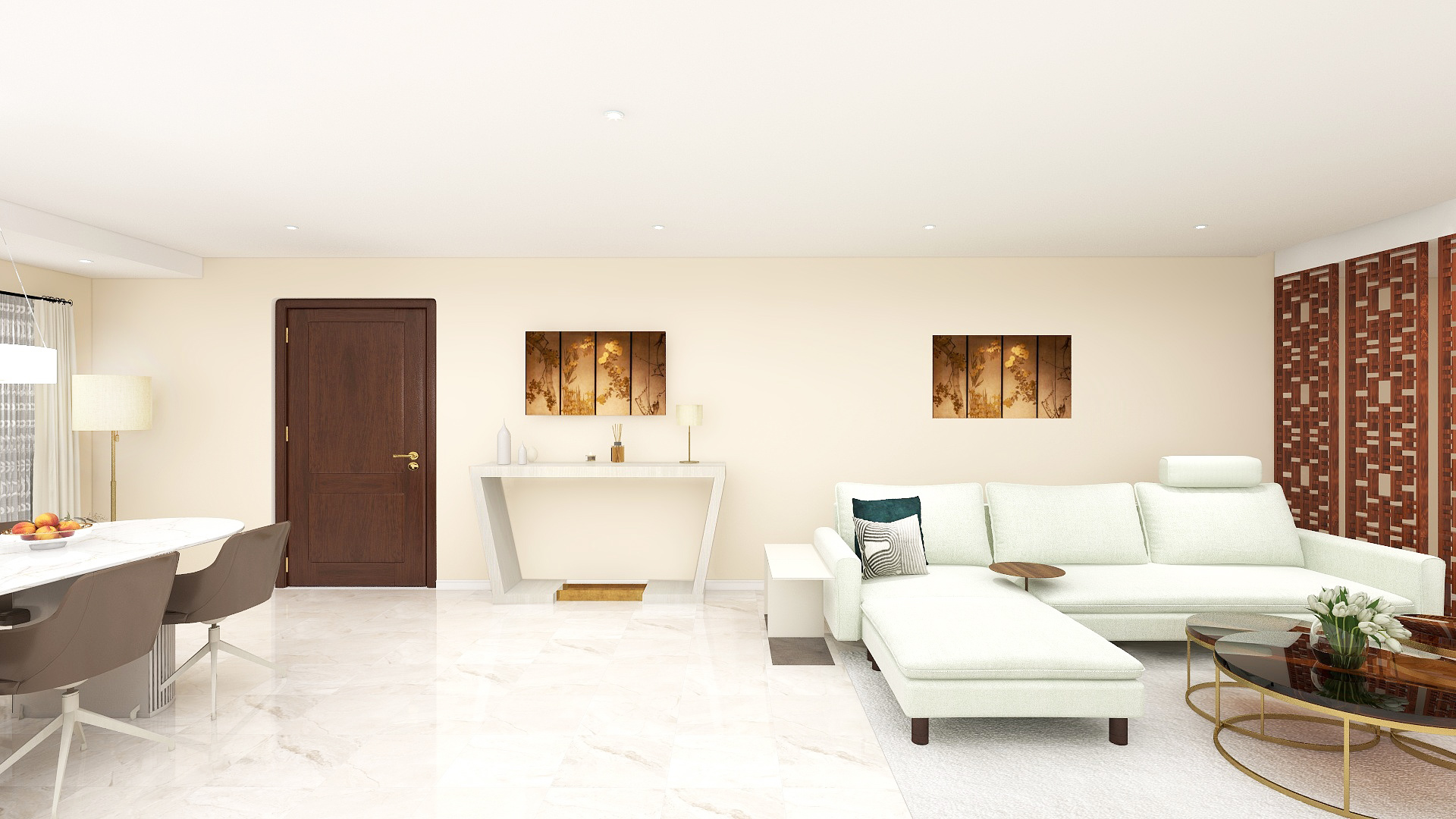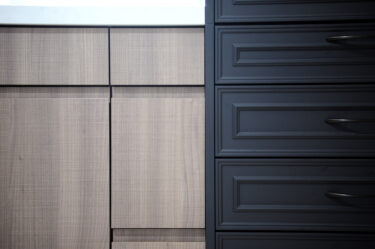I was responsible for the interior design upon request from a diplomat working at the Embassy of Oman. I’ve already shared some of our story about this on Instagram, I’d like to discuss how we planned it on the blog.
The client’s apartment is furnished, but the overall color scheme was dominated by dark browns, and each piece of furniture is bulky due to both color, size and age. They expressed a desire to transform the space into something beautiful and light. She requested to avoid investing too much in items that couldn’t be taken back home, such as curtains and lighting, and she preferred to skip on interior accessories.
Considering that many residents, including families and individuals, had used the apartment for decades, there were noticeable signs of wear and tear, like children’s scribbles and stains on the wallpaper. Thus, she decided to partially replace the wallpaper without exceeding the budget, suggesting Japanese vinyl wallpaper (the selection depends on the budget, preferences, and installation time).
While the overall plan was left to our discretion, we drew inspiration from conversations, the client’s atmosphere, clothing, belongings, and the colors and structure of their residence. We proposed a space suitable for a sophisticated and refined single woman.
We aimed to choose items made in Japan or by Japanese manufacturers, ensuring they could evoke memories when taken back to their home country. However, we faced an unexpected setback when selecting the dining table set. Despite initially having a three-month delivery timeframe, complications arising from conflicts in the Red Sea disrupted transportation via the Suez Canal, extending the delivery to five or six months. This experience taught us that overseas products are indeed influenced by global events, not just those in Russia and Ukraine.
While the presentation was nerve-wracking, as we progressed with fabric samples, the client’s eyes lit up, allowing me to confidently present our proposal. Additionally, we proposed Japanese-style artwork depicting the four seasons, which received positive feedback. They also expressed a desire to incorporate elements of Oman, enriching our plan further.
On another day, we went to see the furniture we intended to purchase. Knowing they were incredibly busy, I planned an efficient route to visit multiple showrooms, contacting the staff in advance. We aimed to spend only 10 to 15 minutes at each showroom, and with the embassy’s dedicated car, we finished visiting six places in about two hours. I’m sure the showroom staff were surprised by our quick decision-making.
Many of my clients are quick decision-makers, and I believe this is because they have important jobs that require making numerous decisions in a short amount of time. To respect their time, I prepare for meetings so that multiple decisions can be made efficiently and try to minimize email exchanges. However, by the end of our work together, we usually become quite friendly, and I often find myself sharing gourmet tips and recommended places unrelated to work.
While I’m not a native English speaker and remain at an intermediate level, I’ve had experiences abroad where I struggled to find what I needed or navigate procedures due to language barriers. Therefore, I strive to provide a one-stop service from planning to implementation for my clients, ensuring they don’t face unnecessary challenges. I’m also willing to assist with tasks beyond my usual scope, such as recommending moving companies, appliance or furniture disposal services, suggesting mattress or futon manufacturers, assisting with furniture assembly, or arranging custom house plaques. While these may seem like minor tasks, my clients often greatly appreciate them.
I hope to make my clients feel like family during their time in Japan.
Once everything is completed, I plan to write another blog post, including photos of the finished project.



